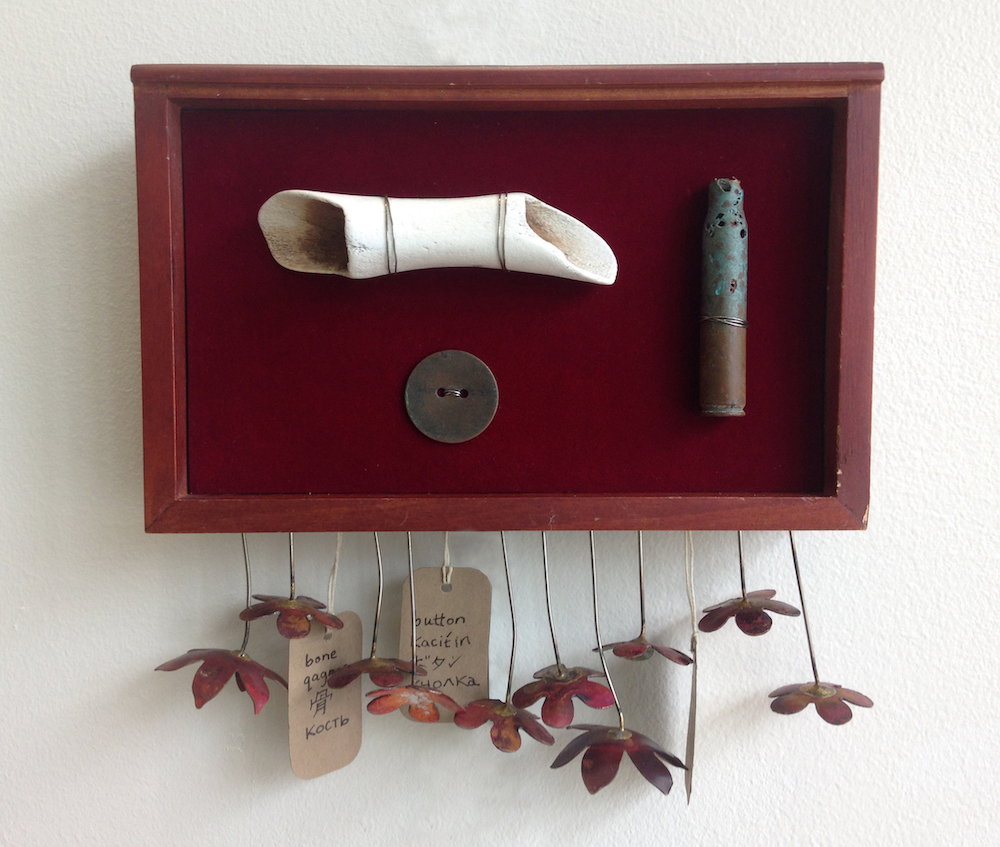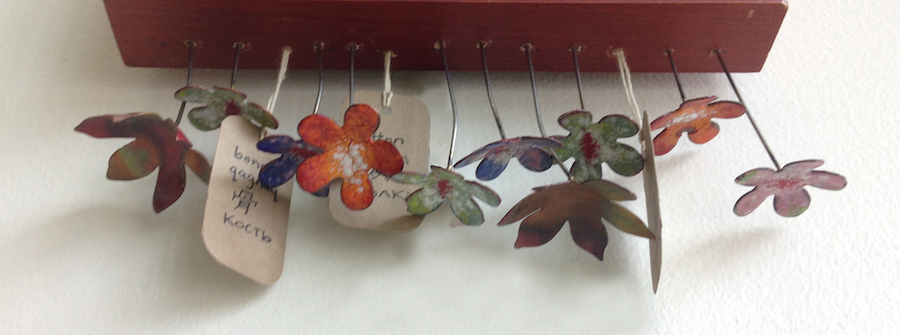
Bone, Button, Bullet
Assemblage, 2018
Bone, button, bullet, foam, drawer, paper, string
7.5" x 7.5" x 1.5"
In the 1860 Census, the Unangax village of Attu (also called Chichagof) listed 107 people; there were 101 in 1890; 29 in 1930; and 44 in 1940. When Japanese forces overtook Attu in 1942, the surviving villagers and one non-Native teacher became Prisoners of War in Japan. Women worked at camp, children in nearby factories, and men in clay mines where their lungs filled with dust. Some were subjected to medical experimentation. Nearly half, 21, perished in the harsh conditions.
When US forces on Attu recognized a Japanese military camp at the village site, B-25 and P-38 bombers destroyed all but the Russian Orthodox Church in half a day.
Of the surviving Attuans released from Japan, only fifteen (4 men, 4 women, and 7 children) were well enough to return to the Aleutians. Too small in number to resettle Attu, they were placed in Atka (six months after the Atkans returned from their US internment) to rebuild together. Unangax of the Near Islands (which includes Attu) have cultural differences and speak a different dialect than the rest of the chain. In earlier times, Attuans and Atkans had been adversaries.
“The People were getting sick one after another until I was almost the only one left at home to cook… my children were starving. So when I went to fetch some water, I would pick orange peelings off the ground…Then I fed them to my children, and only then would they stop crying for awhile.”
-Olean Horosoff (Golodoff) Prokopeuff, regarding her imprisonment in Japan
